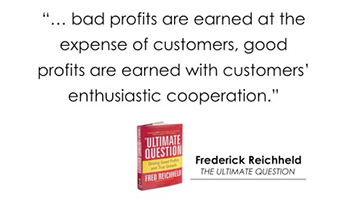Who are your Top 100 Clients?
In my first week in Australia I’ve met some incredible business owners including many of the country’s best real estate agents who gathered together for a Mastermind Group meeting in Melbourne where I presented four-i from the UK.

A question posed to the Group caused me to sit up and take notice – “who are your Top 100 clients?” with the follow up, “by Recency, Frequency or Aspiration?”
This way of categorising clients I subsequently learned is very clever.
Recent clients, so long as you’ve delivered, will be holding you in high regard. They will take your call, have a conversation and be open to considering referring and recommending you. Frequent clients even more so – by definition they repeat purchase and therefore are mostly likely to feel they have a good relationship with you.
But the group that pricked my interest was “by Aspiration”. These are the clients who you may or not have a good relationship with but are key influencers, people that others aspire to emulate and will take their cues from – and every sector has them.
In his excellent book, ‘Influence, Science & Practice’, Professor Robert Cialdini talks about social proof as one of the six key principles of persuasion. This concept is picked up on and expanded by Malcolm Gladwell in his book, ‘The Tipping Point’ where the social proof driver is amplified by a huge factor when key people of influence are seen to be using your service or buying your product. Every industry, every town, every socio-economic group has it’s key people of influence and I think it’s a very clever idea to identify who these people are, on a specific, micro-economic level, and make sure you have a communications strategy to win their business and then keep it. Even if they don’t become your largest direct referrer, they just might be even more powerful indirectly, “well if (insert name of key person of influence) uses them then they must be good”.
I believe that working your database of Top 100 clients could become the single most fruitful generator of new business – it takes effort, but then doesn’t all highly effective marketing?






